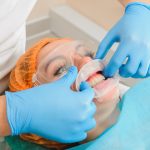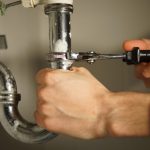A variety of injectable fillers exist for treating facial folds and heavy lines as well as enhancement of the size of the lips. While many of those injectable fillers are somewhat distinct and past varying periods of time following injection, there’s absolutely no question about their instant satisfying results. Despite the instantaneous results they create, many patients fear (understandably) the actual injection procedure. However you look at it, the sticking of a needle to very sensitive facial areas can surely give 1 pause for consideration.
While it’s correct that most injectable fillers use very small needles (typically 30 judges, the smallest needle made by bulk fabrication methods), they will cause some discomfort. I have discovered that some patients, unexpectedly, tolerate shots with very little discomfort while others experience significant distress. Given that no injectable filler is permanent, meaning one shot for life, the need for repeat injection treatments is essential. Since repeated shots are essential, I feel that the continuing needling encounter be as comfortable as you can.
Many pain-reducing approaches are available for facial shots like ice program, numbing lotions, and numbing brokers at the injectable fillers themselves. I have not discovered, but that the majority of these commonly and easily used methods to be especially powerful. I regularly use nerve blocks which can quickly be achieved and are a lot more effective. Nerve blocks, also called dental cubes, are injections done from the interior of the mouth. When doing such nerve injections, what you’re really after is where the big sensory branches of the trigeminal nerve leave out of the jaw bones. For the top lip and nasolabial (cheek-lip grooves) folds, then the guts come out via a bone hole instantly underneath the eye. (infraorbital nerve) For the lower lip, the nerve (psychological nerve) comes out between the second and first bicuspid teeth of the lower jaw. A couple of tenths of a ccs. Of plain lidocaine, which burns in less than 30 minutes, will create most of the projected injection area go numb. This is of particular value in lip shots, which would be the most area to inject on the face. invisalign edmonton
While most individuals fear that a’dental injection’, it may be uncomfortable if done well. Apart from…, one small needle stick is much better than several needle sticks that are usually needed for most injectable facial filler remedies. If the injection treatment is much more comfortable, you’ll most likely undergo further treatments later on.
Ace Your Dental Hygienist Job Interview
Approach front desk employee to let them know that you are there for an interview. Since it is a dental office, there will be several patrons walking in and outside of the office. You don’t need the staff to think that you’re there as a patient. Don’t forget to be considerate to all staff members, they could be your future colleagues!
Remember to be more conscious of the equilibrium of this conversation. Don’t speak over fifty percent of the time and limit your answers to below 5 minutes every day. In addition, be conscious of staying on topic with your response, and never interrupt the interviewer.
Exercise your interview with a friend or family member and ask them to get feedback. Oftentimes, people use fillers such as”such as”, “umm”, or”you know”, which may become a distraction. Practicing your interview can help you minimize the usage of those fillers during the actual interview.
After you have finished your education and training, it’s time to land your first job! Like with nearly all tasks, you will be interviewed prior to being hired. Not only do you want a strong resume, but you need to make a good impression on your potential employer, but who will most likely be the dentist. Follow these general Pointers to Help you ace your interview:
First of all, make sure that you bring all of the necessary documents: a few copies of your resume, a presentation portfolio, and a record of references. Plan to have at least three professional references to your list, and don’t forget to inquire before including them. It’s also a good idea to give your references a copy of your resume, so they can be prepared if and when the employer contacts them.
After scheduling the interview, plan to reach the office about 10-15 minutes early. This will demonstrate that you are ready and respect their time. Do not make the mistake of showing up too early, which could cause the interviewer pressure to never keep you waiting.
Prepare a list of questions that you want to ask the interviewer at the close of the interview. Almost every job interview ends with the interviewer asking in the event that you have some questions for them. If you don’t have any queries, you might seem unprofessional or perhaps egotistical.
When asking questions about the task, don’t forget to consult with the job from the third person instead of the first person. For example, “What are the dental hygienist’s daily responsibilities?” Instead of, “What will be my everyday responsibilities?” You don’t want to see that you think you have been hired for the job.
Avoid talking about salary until you’re actually offered the job. If the interviewer brings up the topic, suggest it is available for discussion if they decide to hire you. However, before you actually begin working for the practice, make sure you have agreed to a salary.




